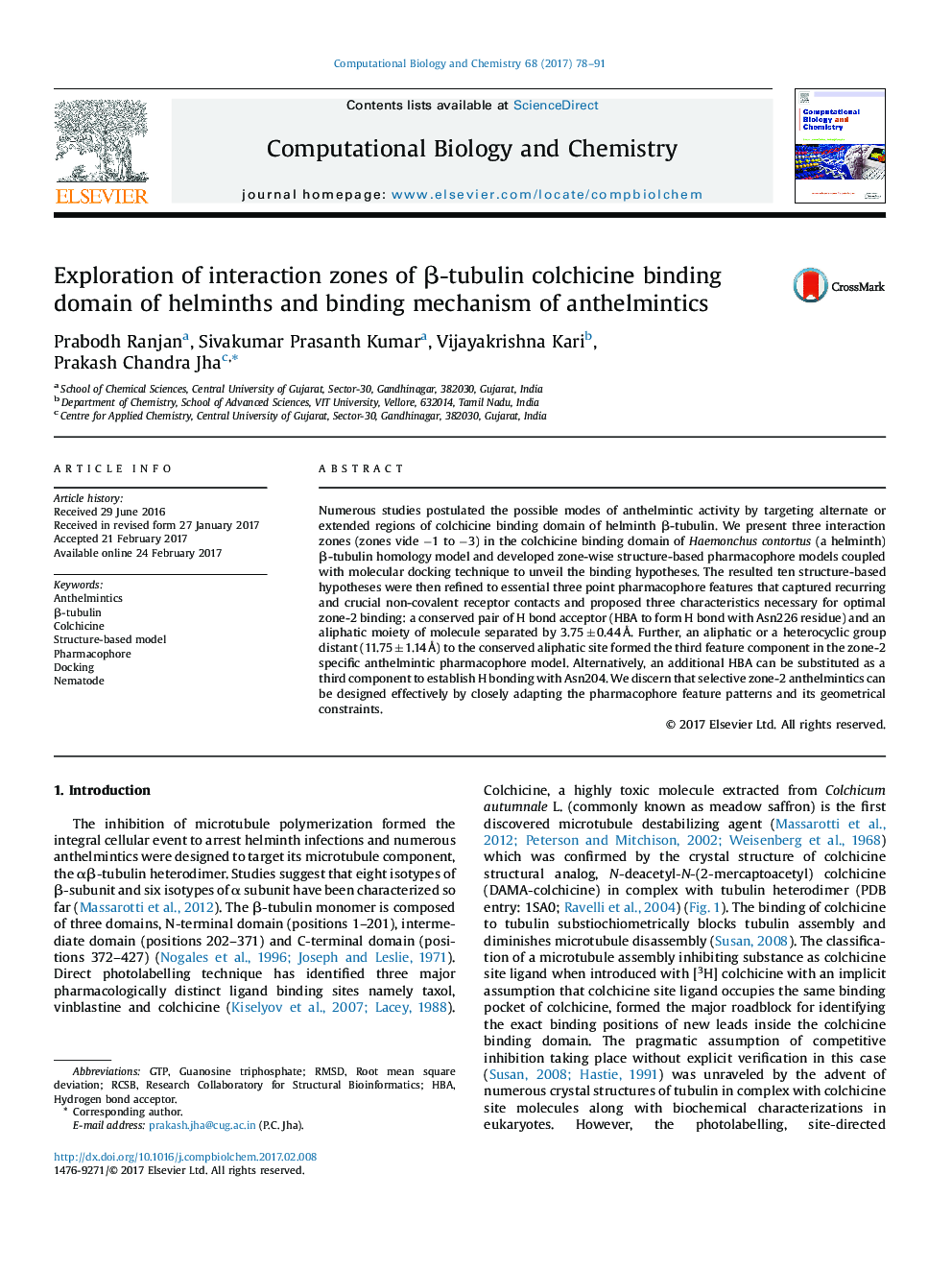| Article ID | Journal | Published Year | Pages | File Type |
|---|---|---|---|---|
| 6451319 | Computational Biology and Chemistry | 2017 | 14 Pages |
â¢Postulated the possible modes of anthelminthic activity and its underlying resistance mechanisms.â¢Identification of three interaction zone of colchicine binding domain of H. contortus β-tubulin homology model using protein-ligand interaction fingerprints.â¢Zone-2 anthelmintic structure-based pharmacophore models proposed using dock conformations of β-tubulin anthelmintics and inhibitors.
Numerous studies postulated the possible modes of anthelmintic activity by targeting alternate or extended regions of colchicine binding domain of helminth β-tubulin. We present three interaction zones (zones vide â1 to â3) in the colchicine binding domain of Haemonchus contortus (a helminth) β-tubulin homology model and developed zone-wise structure-based pharmacophore models coupled with molecular docking technique to unveil the binding hypotheses. The resulted ten structure-based hypotheses were then refined to essential three point pharmacophore features that captured recurring and crucial non-covalent receptor contacts and proposed three characteristics necessary for optimal zone-2 binding: a conserved pair of H bond acceptor (HBA to form H bond with Asn226 residue) and an aliphatic moiety of molecule separated by 3.75 ± 0.44 à . Further, an aliphatic or a heterocyclic group distant (11.75 ± 1.14 à ) to the conserved aliphatic site formed the third feature component in the zone-2 specific anthelmintic pharmacophore model. Alternatively, an additional HBA can be substituted as a third component to establish H bonding with Asn204. We discern that selective zone-2 anthelmintics can be designed effectively by closely adapting the pharmacophore feature patterns and its geometrical constraints.
Graphical abstractDownload high-res image (171KB)Download full-size image
